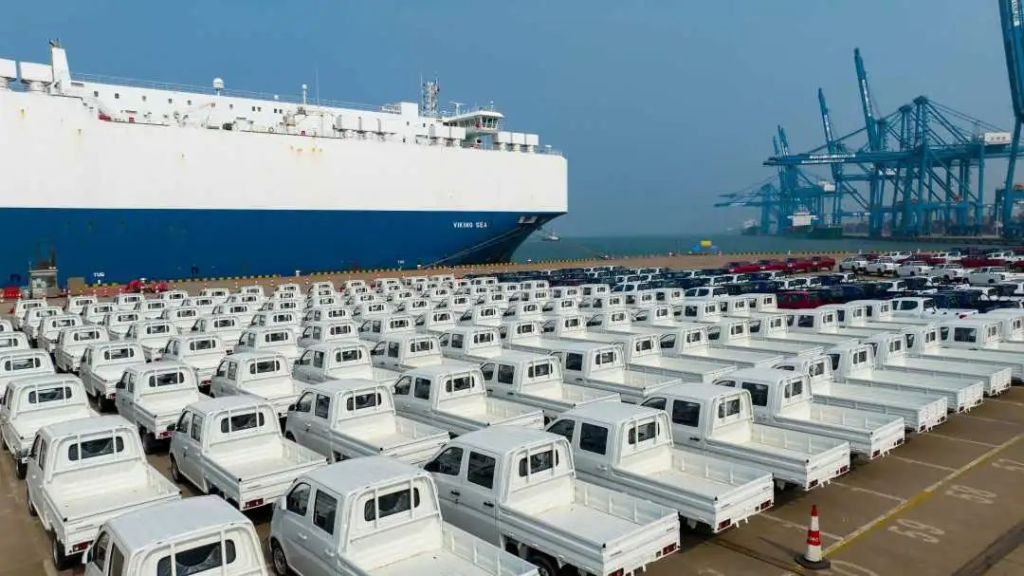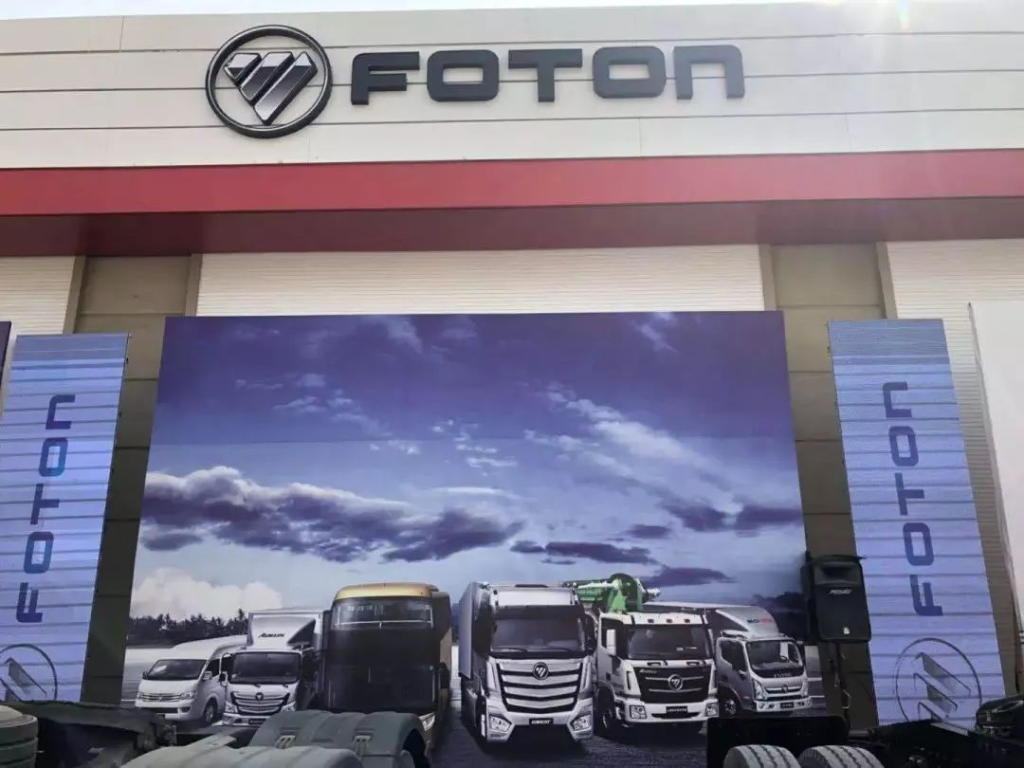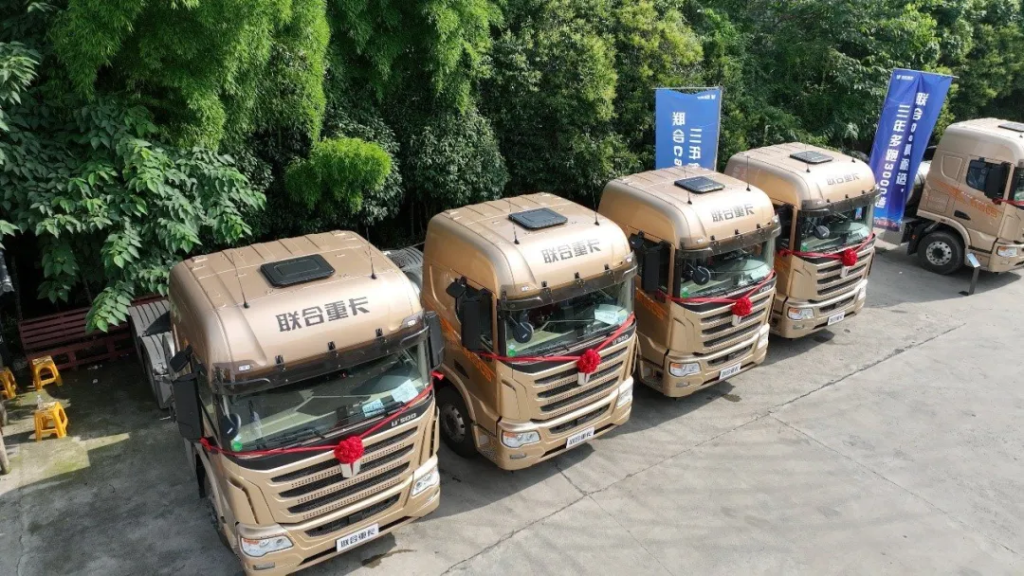Domestic commercial vehicles whose product capabilities are not inferior to those of overseas competitors still need the coordinated support of all parties to help them go global.

Recently, the continuous growth of China’s passenger car exports has attracted the attention of all parties. In fact, not only are passenger cars gaining momentum overseas, but domestic commercial vehicles have also achieved outstanding export results. The reason behind this is that Chinese commercial vehicle companies have continued to improve their product capabilities amid the internal convolution, and leading companies have adopted various methods to further “localize” in overseas markets.
Opportunities and challenges often coexist. Chinese commercial vehicle companies that are expanding overseas still face problems such as difficulty in conquering the markets of developed countries due to geopolitical conflicts, inconsistent domestic and overseas standards, and lack of financial support. If you want to successfully go overseas, you need not only a commercial vehicle company to work alone, but also the cooperation of all parties to support “going out”.
Outstanding export performance
“Objectively speaking, compared with passenger vehicles used to transport people, foreign regulations for commercial vehicles used to transport goods are relatively less strict, and there are fewer restrictions on overseas products.” For commercial vehicles, the export volume has continued to rise in recent years, a domestic commercial vehicle Car company managers spoke frankly to us.

In the past year, the export performance of domestic commercial vehicles was more outstanding than that of passenger cars. In 2023, a total of 4.031 million commercial vehicles were sold in China, of which 770,000 were exported overseas. Exports accounted for 19% of total sales, which is higher than passenger cars, which accounted for 15.4%.
According to a report provided by China Automotive Research and Development Corporation, in the first quarter of this year, China exported a total of 192,700 commercial vehicles, a year-on-year increase of 8.6%. SINOTRUK, FOTON, FAW, SHACMAN and other companies have obviously gained a share of the increased export market. China’s commercial vehicle exports have formed a diversified pattern dominated by tractors, with multiple models such as dump, cargo and special-purpose vehicles coexisting.
Under this situation, leading commercial vehicle companies have raised their export targets. In 2024, FOTON plans to increase its export volume on the basis of 2023, while SINOTRUK has set its export target this year at 160,000 vehicles, a 23% increase in final sales compared with the previous year.
In this regard, Foton Motor told us: “For Chinese commercial vehicle companies, future layout in overseas markets is an important strategic direction. The competitiveness of Chinese commercial vehicles in the international market is increasing, and products that are indistinguishable from international brands Technology, a complete supply chain, and the first-mover advantage of new energy are the three major reasons supporting the rapid growth of my country’s commercial vehicle exports.”
In the inward-moving Chinese market, domestic truck products have been greatly improved in terms of appearance, power, comfort and reliability. Thanks to lower raw material costs, labor costs, cost advantages brought by economies of scale and effective cost control, Chinese commercial vehicle prices are also more attractive than overseas competitors.
Domestic commercial vehicles, like passenger cars, have gone through a stage of learning, improvement, and perfection. With the development of China’s automobile industry, the gap between the technical capabilities of our country’s automobile industry and that of European and American countries is getting smaller and smaller. In some fields, At the same time, China’s automobile industry chain is also becoming more and more perfect; the price of domestic commercial vehicles is much lower than that of foreign brands of the same category. Therefore, Chinese commercial vehicle brands have greater advantages in entering overseas markets.
Products such as heavy-duty trucks often cost more than $100,000 in North America. In comparison, Chinese trucks are much more affordable.
CITIC Securities released a report in 2023 that China’s heavy truck export hub is about 320,000 yuan. The average unit price is slightly lower than domestically, but the amortization provision is smaller, and the net profit of a single vehicle is 6,000-12,000 yuan higher than domestically.
Further localization
When a certain industrial product seeks sales in overseas markets, strong product capabilities are only a sufficient condition for success. Density of network layout and localization as much as possible to meet local needs are also essential, and these all require time to accumulate.
Nowadays, in terms of localization of domestic commercial vehicle companies, it can be said that leading companies have made achievements, and small and medium-sized enterprises are also working hard to promote it.
So far, Foton Motor has established more than 200 sales outlets in 20 core overseas markets, and has established more than 22 KD factories in more than 17 countries and regions; SINOTRUK has developed approximately hundreds of distribution outlets at all levels in many countries around the world. And successively established dozens of KD production factories.

While expanding outlets, promoting product localization requires improving products based on local terrain and driving habits. For example, SINOTRUK conducted research on local driving habits, road conditions and fuel quality, and launched an “African version” of trucks to The suspension and gearbox were improved.
In the domestic commercial vehicle industry, not only leading companies are actively adapting to localization, but other companies have also changed from the past “directly selling domestic products overseas” to designing products based on overseas market needs.
For example, Jiangling Motors, which sold a total of 310,000 vehicles in 2023, exported about 90,000 vehicles that year. In 2024, Jiangling Motors plans to expand overseas market scale, continue to improve overseas service experience, optimize and enhance overseas channels, and focus on promoting “one country, one policy” overseas strategy.
It is reported that Jiangling Motors has established a specialized overseas business department in 2023. The establishment of this department is precisely to make corresponding differentiated designs based on the needs of different countries and regions.
There are real cultural barriers to developing overseas markets. In this regard, Chinese commercial vehicle companies have also adopted various methods to try to break through. For example, SINOTRUK has recruited and trained a large number of local talents in Pakistan to solve the problems of communication efficiency and cultural differences; FOTON has cooperated with Italy’s Piaggio Group and Indonesia’s INDOMOBIL to jointly develop products to adapt to the local market.
“Both parties in localization cooperation can realize the exchange and complementation of advantages, which can help us gain a deeper understanding of local market needs and consumer preferences. Cooperation with local companies can also help us better understand and comply with local laws and regulations, and absorb local Foton Motor told us that cultural elements should be integrated into product design to improve the cultural affinity of the product and ensure that the product design complies with local standards.
Still need to overcome resistance
The fact that commercial vehicle companies attach so much importance to foreign markets also stems from the judgment that the potential of the domestic market is insufficient. The industry generally believes that the domestic market has inevitably entered the era of stock competition, and it is more difficult to make profits than in the past.
At the 2024 China Commercial Vehicle Forum held in March this year, Wu Xibin, general manager of Foton Motor, said, “I think the demand for 4 million vehicles in the domestic market will be an upper limit. The domestic market will focus on stock competition and low-carbon transformation and development, so The total volume will not increase much.”
Wu Xibin’s judgment on the capacity of China’s commercial vehicle market has been recognized by his peers. Although compared with the past, Chinese commercial vehicles have been recognized by a large number of overseas users, there are still various problems that need to be overcome. First of all, due to geopolitical and other influences, Chinese commercial vehicles are rarely exported to powerful automobile countries such as the United States, Japan and South Korea. They are mainly exported to Russia, Mexico and developing countries along the “Belt and Road”.

To expand overseas markets, it is difficult for a company to “go it alone”. It requires the efforts of the entire industry and the active cooperation and intervention of the government. Take the differences in charging sockets across countries as an example. While companies understand the current differences in charging sockets across countries, the government also needs to formulate unified standards internally, strengthen communication and coordination externally, and establish effective standards communication and collaboration mechanisms with important markets such as ASEAN., Promote the mutual recognition and integration of new energy vehicle standards.
Shi Jianhua, deputy secretary-general of the China Electric Vehicles Association of 100, once said: “Japanese and Korean automobile exports to the world are not done by one company alone, but by consortiums, logistics, and finance to support going overseas. In contrast, we still lack the ability to go overseas as a group and share Overseas resources and the spirit of jointly going overseas and jointly supporting going global.”
In this regard, Foton Motor told us: “When domestic commercial vehicle companies go overseas to localize, in addition to competing with each other, they also have to face competitive pressure from international brands with high brand loyalty such as Japan and South Korea. It is necessary for each company to For enterprises to form a chess game and achieve a positive impression of ‘Made in China’, it requires efforts and support from many aspects. “
